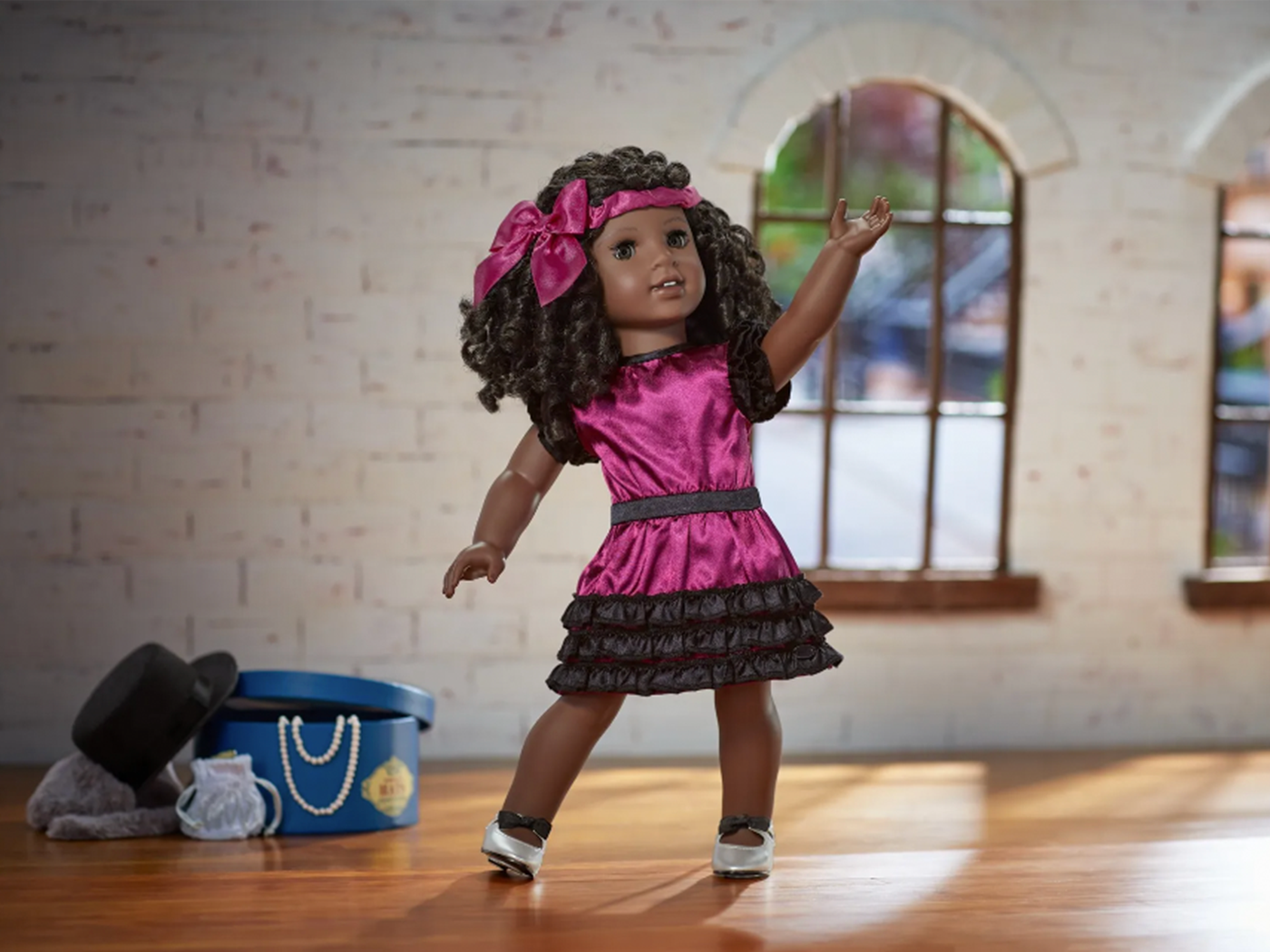- August 28, 2022
- No Comment
- 11 minutes read
New American Girl Doll Celebrates Black Joy During the Harlem Renaissance – Smithsonian Magazine

Sections
Nine-year-old Claudie Wells’ story unfolds in 1920s New York
Meilan Solly
Associate Editor, History
When bestselling author Brit Bennett posted a tweet calling for American Girl, the beloved toy company known for its richly researched historical dolls, to debut a new Black character, she didn’t expect her request—“please let me write it”—to gain much traction.
But Bennett’s tweet in late 2020 caught the attention of the American Girl team, spurring “lots of conversations in-house, and then with Brit,” as Jodi Goldberg, the company’s senior director of content development, tells Publishers Weekly’s Karen Raugust. Now, after two years of collaboration between Bennett, American Girl and a panel of outside experts, the author’s spur-of-the-moment proposal has culminated in the release of Claudie Wells, a Black doll whose story is set in 1922, at the height of the Harlem Renaissance.
“As a girl, I always loved studying the Harlem Renaissance, an outpouring of Black artistry that emerged alongside larger struggles for equal rights,” says Bennett in a statement. “I hope readers will enjoy exploring this fascinating era through Claudie’s eyes.”
Bennett wrote Meet Claudie, an illustrated children’s book that introduces readers to the 9-year-old protagonist, her family and the artists who live alongside them in a Harlem boardinghouse. As CBS News reports, Claudie, who finds herself surrounded by a host of talented musicians, painters and performers, embarks on a mission to discover “what she [has] to offer.” Along the way, notes an American Girl blog post, she learns about her community’s history, from its roots in the Great Migration to its ongoing fight for racial equality.
In addition to the doll and book, American Girl’s Claudie collection features 1920s-inspired furniture, clothing and accessories, including a bakery owned by Claudie’s World War I veteran father, a plush dog named Dizzy Dot, a kick scooter and a Baby Ruth candy bar. Samantha Black, the fashion designer behind the Sammy B brand, created three special-edition outfits for Claudie that “showcase her modern take on 1920s glamour,” according to the statement.
“When I think of the Harlem Renaissance, I think of glam,” Black tells Vogue’s Laia Garcia-Furtado. “Whether people were poor or rich, they showed their creativity through their sense of style.”
Like American Girl’s other historical characters, Claudie was developed in consultation with scholars—among them, historian Keisha N. Blain and Spencer R. Crew, emeritus director of the Smithsonian’s National Museum of African American History and Culture—who advised the company on how best to build the doll’s world. Doll designers also drew inspiration from 1920s publications, photographs, catalogs and magazines (including the Brownies’ Book, a children’s periodical edited by W.E.B. Du Bois).
Claudie is the fourth Black doll in American Girl’s historical line. She was preceded by Addy Walker, a character who escapes slavery during the Civil War; Cécile Rey, a resident of 1850s New Orleans whose collection was retired in 2014, just three years after its release; and Melody Ellison, an aspiring singer who comes of age amid the tumult of the 1960s civil rights movement.
Speaking with Smithsonian magazine last year, Emilie Zaslow, author of Playing With America’s Doll: A Cultural Analysis of the American Girl Collection, detailed the mounting push among fans for a character like Claudie.
“Addy and Melody are both stories of racial struggle, bookended by slavery on the one side and the civil rights movement on the other,” Zaslow said. “There’s been a call for the story of an African American girlhood that’s not filled with struggle, like a Harlem Renaissance story that’s focused on joy, art and music. … [Currently, American Girl doesn’t] have a story that focuses on the African American experience as something just to be celebrated and not something to be thought of as pain and strife.”
American Girl enthusiasts and casual fans alike celebrated Claudie’s release on social media, alternatively praising the doll as an example of why representation matters and calling attention to the fans who have been asking for a Harlem Renaissance character for years.
As Black tells Women’s Wear Daily’s Rosemary Feitelberg, she relished the opportunity to “design something for little Black girls,” who she hopes will see themselves in Claudie.
“Growing up, I don’t know if as much love and attention was put into the brown and Black [dolls],” Black says. “Even I wanted the blonde doll because I felt that the outfits and accessories were better. With Claudie, I feel that everything about her is special even from her casual outfits to the outfits that I designed.”
Claudie’s launch arrives at a time of renewed popularity for American Girl, which celebrated its 35th anniversary last year with the rerelease of six historical characters, some of whom had previously been “archived,” or discontinued. More recently, the brand’s dolls have emerged as the unlikely stars of viral memes set during “historical dramas, many of them veering into the absurd,” writes Valeriya Safronova for the New York Times.
In the memes, dolls dressed in period-appropriate attire stand in front of tailor-made backdrops; text overlaid on the images proclaims the need for an American Girl doll who lived through situations ranging from the historically significant to the hilariously obscure: the sinking of the Titanic, the Great Molasses Flood of 1919, the execution of Tudor queen Anne Boleyn.
“American Girl is in the midst of its own renaissance,” Goldberg tells Publishers Weekly. “People went crazy for it. [The 35th anniversary revival] solidified that there was a whole new audience of young women who love it in a very different way.”
| |
Meilan Solly is Smithsonian magazine's associate digital editor, history.
Explore
Subscribe
Newsletters
Our Partners
Terms of Use
© 2022 Smithsonian Magazine Privacy Statement Cookie Policy Terms of Use Advertising Notice Manage My Data Cookie Settings

